- News
- Reviews
- Bikes
- Components
- Bar tape & grips
- Bottom brackets
- Brake & gear cables
- Brake & STI levers
- Brake pads & spares
- Brakes
- Cassettes & freewheels
- Chains
- Chainsets & chainrings
- Derailleurs - front
- Derailleurs - rear
- Forks
- Gear levers & shifters
- Groupsets
- Handlebars & extensions
- Headsets
- Hubs
- Inner tubes
- Pedals
- Quick releases & skewers
- Saddles
- Seatposts
- Stems
- Wheels
- Tyres
- Tubeless valves
- Accessories
- Accessories - misc
- Computer mounts
- Bags
- Bar ends
- Bike bags & cases
- Bottle cages
- Bottles
- Cameras
- Car racks
- Child seats
- Computers
- Glasses
- GPS units
- Helmets
- Lights - front
- Lights - rear
- Lights - sets
- Locks
- Mirrors
- Mudguards
- Racks
- Pumps & CO2 inflators
- Puncture kits
- Reflectives
- Smart watches
- Stands and racks
- Trailers
- Clothing
- Health, fitness and nutrition
- Tools and workshop
- Miscellaneous
- Buyers Guides
- Features
- Forum
- Recommends
- Podcast
review
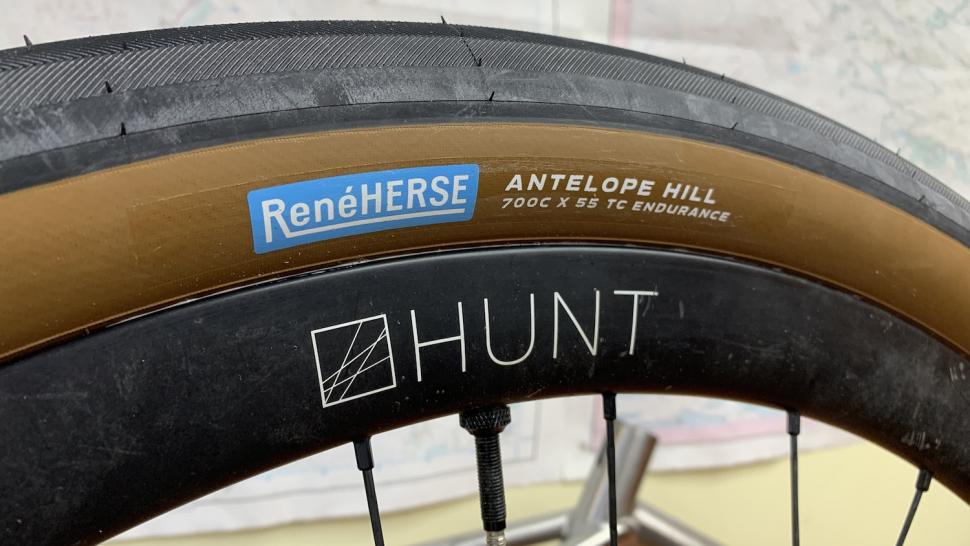 Rene Herse Antelope Hill Endurance Tyre
Rene Herse Antelope Hill Endurance Tyre£97.00
VERDICT:
Mega wide and mega-tough slick with a supple ride – but a mega price tag to boot
Enormous
Fast and grippy
Tough yet supple
Seal very well
Quiet
That price – it's only for one!
Just one!
Weight:
576g
Contact:
At road.cc every product is thoroughly tested for as long as it takes to get a proper insight into how well it works. Our reviewers are experienced cyclists that we trust to be objective. While we strive to ensure that opinions expressed are backed up by facts, reviews are by their nature an informed opinion, not a definitive verdict. We don't intentionally try to break anything (except locks) but we do try to look for weak points in any design. The overall score is not just an average of the other scores: it reflects both a product's function and value – with value determined by how a product compares with items of similar spec, quality, and price.
What the road.cc scores meanGood scores are more common than bad, because fortunately good products are more common than bad.
- Exceptional
- Excellent
- Very Good
- Good
- Quite good
- Average
- Not so good
- Poor
- Bad
- Appalling
The René Herse Antelope Hill TC is a 55mm (2.2in) 700C monster slick. It rolls fast and quiet, sticking to gravel tracks and tarmac in an almost unnaturally tenacious manner. With near-bulletproof sidewalls, this is an epic tyre for epic rides – with an epic price tag to boot.
For more options, check out our guide to the best gravel tyres.
A few years back I tested the René Herse Fleecer Ridge tyres with an Endurance casing, a 4.5-star review only held back by its [checks financial section of the Dictionary of Cliches] eye-watering price. Now here's its slick sibling, the Antelope Hill.
> Buy the René Herse Antelope Ridge from Sven Cycles now
As with all René Herse tyres, you get a choice of four casings – Standard, Extralight, Endurance and Endurance Plus. As with the Fleecer Ridge, I'm testing the Antelope Hill with Endurance casing.
One common misconception is that RH tyres are just rebadged Panaracers, but that's not the case. They used to be made by Panaracer, but are now made by whichever manufacturer can meet RH's standards for quality, to RH's own recipe. Incidentally, the model names are chosen from off-road trails around the Seattle area, where René Herse (RH hereon) is based.
Compared with the Fleecer Ridge, the Antelope Hill is roughly 100g lighter thanks to its lack of knobs, but thanks to [waves arms] EVERYTHING, they are now even pricier at £97. Plus postage. Yes, this is a £97 bicycle slick in a market where you can get a 3in-wide extreme enduro tyre for considerably less. In fact, you can get many car tyres for less. It's not even that light at 576g. But all this price and weight comparison is missing the point.
It's just possible that's a controversial statement, but let me explain.
Setting these up tubeless on some Hunt 35 Carbon Gravel X-Wide wheels was simplicity itself. A dry run without sealant first saw them pop on and held air first go, only needing fingers to be convinced over the rim wall. The 23mm internal rim width saw the Antelope Hills blow up a smidge over spec at 56mm – or 2.2in in old/mountain bike money.
The first rule of tubeless compatibility is that there are no rules, so your mileage may vary regarding rim fit and faff, but they worked first time for me. After adding in some Orange Seal, there wasn't a single spec of seepage through the sidewalls.
This is the Endurance part of the spec, where the casing uses the same fine threads as the lighter models but in a denser weave, with an additional protective belt to ward off sidewall cuts.
The Endurance Plus casing, in case you were wondering, keeps ups the thread game as well with 'ultra-strong threads' and a commensurately less-supple, heavier spec.
They grow so fast
Five years ago I wrote about the RH Barlow Pass TC. I loved it. That was back in an era when even 38mm was pushing what most road or 'gravel' frames could accommodate. Now we're much more grown up about the benefits of wider, softer tyres for everyone – even pro riders. Pros are running the numbers and finding tyres up to 32mm are the sweet spot for world-class heroics on a mixture of road and cobbles.
Meanwhile, in the real world where we seek comfort, speed, grip, puncture-proofing and safety, going as wide as possible is the mantra. Options abound for wider tyres, and René Herse is to be applauded for largely leading this charge. A tiny brand compared to the other manufacturers, its tyres are wildly over-represented in long-distance off-road race results.
On the 2022 Tour Divide – a 2,666-mile off-road epic from Canada to Mexico – 20 per cent of starters used RH rubber, and even more amazingly 40 per cent of the top 10 finishers. The winner, Sofiane Sehili, reported that he had no punctures and didn't need to add any air during the two-week race. Sehili was on the same Endurance casing as the Antelope Hill. I can vouch for the fact that once these tyres are inflated you don't need to do any checking – let alone top-ups – for weeks at a time.
A wee downhill
All this brings me back (hello!) to my experience blatting about the Highlands of Perthshire for the last six months. Firstly, no flats. Not one. My one-time downhill racer ego is still writing cheques my 50-year-old musculoskeletal and nervous systems are increasingly reluctant to cash, meaning the faffed-line and optimistic-cornering hits on rocks, waterbars, roots and kerbs come thick and fast.
I don't know what it would take to kill an Antelope Hill tyre, but it likely involves a change of undies, a trip to A&E and/or a new wheelset.
I've taken these tyres over terrain that most gravellers will only experience in their worst nightmares, but around here is the daily grind. Highland estates usually operate their own small quarries, mining the rock then crushing it themselves (by hand, probably) to cheaply effect repair on the shooting tracks up in the hills.
Rock hard rocks
This isn't your soft southern namby-pamby curated and shaped council pea gravel or South Downs chalky clay, oh no Jock. I'm talking fist-size, razor-sharp, white-T-shirted bastardry that – like a night gone wrong in Glasgow – will stab your tyre as soon as look at it.
With a tyre this large and tough, weight is an inevitable consideration. At well over half a kilo per end, these are not the lightweight climbers you're looking for. In fact, ours showed up 41g heavier than the 535g RH claims.
But tough doesn't need to equal slow. Our village castle (honestly, it's like Skyfall round here) has a 1km-long, pan-flat stretch from its gate, and it's the go-to Local Hero All-Out Sprint KOM – one I set myself (oh you're too kind) five years and 13kg of middle-age spread ago on a carbon bike. One with 30mm Extralight René Herse tyres.
Hold on, I'm KOMing
A few weeks back I got within 10 percent of the target time on a heavier gravel bike with a mega-wide non-aero bar, mudguards and the Antelope Hills, managing to hold about 40kph on my own after a pretty hilly ride. No really, put that rosette down, you're too kind.
Now everyone knows Strava KOMs are utter nonsense, there being so many variables on every ride that an apple-with-apples comparison is impossible, but that doesn't stop me mentioning them. Nevertheless, I use it here to highlight that while the Antelope Hill will never be as fast as a lighter, more supple tyre, it can hold its head high.
Being around 105kg including bike, I usually run about 25psi in these 55mm tyres. Handling-wise, all that soft rubber means oodles of grip and cushioning on tarmac and gravel alike. It gives grip for cornering and braking, plus compliance for comfort and less fatigue – it's the recipe for enjoyable, long days out on rough surfaces, sealed or natural.
The wider-tyre evolution, coupled with the slow decline of Britain's roads means I can never see myself going back to a narrower, harder tyre for any reason – going fast and having fun included.
Ponder yonder Sonder
Being able to throw my gravel bike (a Sonder Camino) into twisty tarmac descents with not a care in the world for the upcoming potholes makes for a highly enjoyable time descending the many glens hereabouts.
I've managed about 1,000 miles on the Antelope Hills and they still look new. And remember, this is on mostly rough tracks. Internet reports exist of cyclists getting 5,000 miles plus out of a pair of René Herse slicks. Make of that what you will, but there are the Tour Divide performances to consider too.
Value
Mileage naturally brings us to value. Yes, much cheaper tyres exist, and they may well last 5,000 miles too. At the far end of that spectrum a Schwalbe Marathon Plus could last twice that long – and it will certainly feel twice as long, as those are close to 1kg per tyre stiff as a board.
Comparators for this 700C slick are few and far between. The Schwalbe G-One Allround Evolution in its 700C x 2.25in guise weighs a whopping 685g – 109g (or an iPhone SE) more per tyre. As it lacks large knobs it's fair to call it a slick for off-road purposes, and at £60 in 2021, Jamie rated the 45mm version highly. In 2023 it's more at £66.99, because of course it is.
Probably the closest match is the Schwalbe G-One Speed Evolution at 560g – but Schwalbe's own grip ratings suggest it's much more at home on tarmac than gravel, while not all versions are rated the maximum for durability either.
Vittoria's Terreno comes in a 700C x 2.25in (57mm) version that's 650g. At £54.99 it's getting close to half the price of the Antelope Hill, though it's 75g heavier per tyre too. While it doesn't have any special carcass in this form, it's already a mountain bike tyre and built for rough offroad use to start with.
I've not managed to find a 55mm (or 2.2in) slick 700C tyre with specifically toughened sidewalls for off-road use. Knobbly options abound – it seems there's still a perception that if you're going that wide and off-road you want knobs, but then that means extra noise, weight and drag.
Overall
So these are quite obviously not cheap. Yet everything points to an impressive service life and very impressive performance throughout it. Everyone weighs their own value judgement of price, weight, durability, and ride characteristics, but in my opinion, if you want a big slick that's tough, grippy, fast, quiet and not excessively heavy, the RH Antelope Hills are well worth the investment.
Verdict
Mega wide and mega-tough slick with a supple ride – but a mega price tag to boot
road.cc test report
Make and model: Rene Herse Antelope Hill Endurance Tyre
Size tested: 700 x 55mm
Tell us what the product is for and who it's aimed at. What do the manufacturers say about it? How does that compare to your own feelings about it?
It's for gravel or rough-road riders wanting the ultimate balance of slick-tyre supple-ride volume and puncture protection.
René Herse says:
"The ultimate tire for speedy gravel adventures! The Antelope Hill is the all-road version of our popular Fleecer Ridge knobby.
"Antelope Hill is the last great climb on the 360-mile Oregon Outback mixed-surface ride/race. Oregon's gravel is quite loose in places, and the extra flotation of the Antelope Hill tires gives you more speed and security there. On paved sections, this tire rolls as fast and grip as well as a good racing tire, giving you the best of both worlds.
"The Standard casing is our more affordable option: comfortable and fast, yet also strong to withstand considerable abuse. The Extralight casing takes the performance, comfort and feel of your bike to an entirely new level. The Endurance casing is reinforced for extra sidewall protection and puncture resistance, while retaining the speed and comfort for which Rene Herse tires are famous. The Endurance Plus casing provides the ultimate in sidewall protection for extremely tough conditions.
"The Antelope Hill is tubeless-compatible. For tubeless setup, we recommend SealSmart sealant. When used with tubes, we recommend the SV19 or SV19A tubes. Made in Japan."
Tell us some more about the technical aspects of the product?
From René Herse:
TECHNICAL SPECS
The supple casing of our Rene Herse all-road tires rolls smoothly over surface irregularities. The tread pattern interlocks with the road surface for superior cornering grip, whether your roads are wet or dry. The tread has enough thickness in the center to last many miles, but it's thin and supple on the shoulders where it doesn't wear. All models feature:
Clincher, folding bead
Tubeless-compatible
Maximum pressure with tubes: 55 psi (3.8 bar)
Maximum recommended pressure – tubeless: 55 psi (3.8 bar)
Actual width on 20 mm rim (internal): approx. 54 mm
Actual width on 23 mm rim (internal): approx. 55 mm
Endurance casing
The same ultra-fine threads as our Extralight casing, but in a denser, stronger weave
Protective belt under sidewalls and tread
Ideal for rough gravel and tough conditions
Dark tan sidewalls
535 g
Rate the product for quality of construction:
10/10
Zero sidewall leaks, good bead sizing, went on and up first go, stayed sealed for months.
Rate the product for performance:
10/10
Fast and supple, on or off-road. Corners like you're riding on Velcro.
Rate the product for durability:
10/10
After six months of utter abuse, they still look like new. Zero flats.
Rate the product for weight (if applicable)
6/10
Not particularly light, and ours showed up heavier on the scales than RH claims; but for the size and durability it's not a huge issue.
Rate the product for comfort (if applicable)
10/10
Like riding on a balloon (but a grippy, tough baloon).
Rate the product for value:
5/10
Our value score is based on how the tyre compares with similar – whether you're getting more (or less) for your money. Comparators in this size slick are few and far between, though. The Schwalbe G-One Allround is available in a 57mm width and costs £66, though it weighs 685g.
At £97 per end, these are NOT budget tyres, but in the context of the performance and durability, they're well worth it.
Tell us how the product performed overall when used for its designed purpose
Can't fault it – the biggest genuine slick in the gravel world, with comfort and grip for miles.
Tell us what you particularly liked about the product
The durability. It's hugely confidence-inspiring for long backcountry rides.
Tell us what you particularly disliked about the product
The cost.
How does the price compare to that of similar products in the market, including ones recently tested on road.cc?
It's very expensive...
Did you enjoy using the product? Yes
Would you consider buying the product? Yes
Would you recommend the product to a friend? Yes, in a heartbeat
Use this box to explain your overall score
The only thing stopping this tyre getting five stars is the price – as with all the René Herse tyres I've tried.
About the tester
Age: 47
I usually ride: Sonder Camino Gravelaxe My best bike is: Nah bro that's it
I've been riding for: Over 20 years I ride: A few times a week I would class myself as: Expert
I regularly do the following types of riding: cyclo cross, general fitness riding, mtb, G-R-A-V-E-L
Living in the Highlands, Mike is constantly finding innovative and usually cold/wet ways to accelerate the degradation of cycling kit. At his happiest in a warm workshop holding an anodised tool of high repute, Mike's been taking bikes apart and (mostly) putting them back together for forty years. With a day job in global IT (he's not completely sure what that means either) and having run a boutique cycle service business on the side for a decade, bikes are his escape into the practical and life-changing for his customers.
Latest Comments
- BikingBud 7 min 5 sec ago
Even Grommit has the sense not to sit in the cycle lane or on the pavement. If car drivers only had the common sense of Grommit.
- BikingBud 20 min 10 sec ago
Representing Pearson, solicitor Graham Mann, told the court the driver believed the sun had played a role in the incident as "he looked both ways...
- slc 1 hour 5 min ago
How about requiring all driving to be monitored using technology that has been available for at least 10 years? ...
- Rendel Harris 1 hour 32 min ago
Well it would be irresponsible enough if there were only cars and buses, if there are going to be "cars, buses and traffic" that's just suicidal...
- UnholyGoatFeet 1 hour 42 min ago
It's always the same... People who don't even ride bikes, are the one's crying about change too there precious roads. Let's not bother asking...
- Cycloid 1 hour 46 min ago
There are two British Standards for HiVis Garments BS EN 471 and BS EN 1150. The BS EN 1150 standard is designed for personal / leisure wear and is...
- OnYerBike 2 hours 49 min ago
The difference would be the administration of a (potentially) "noxious substance" (in the eyes of the law) to the thief....
- Hirsute 3 hours 36 min ago
Sure but you can use hire purchase, 0% finance, PCP and lease for arrangements - hence lease being a bit specific. Still 90% on some finance...
- Mybike 4 hours 6 min ago
Knowing the Orange man this might be true .








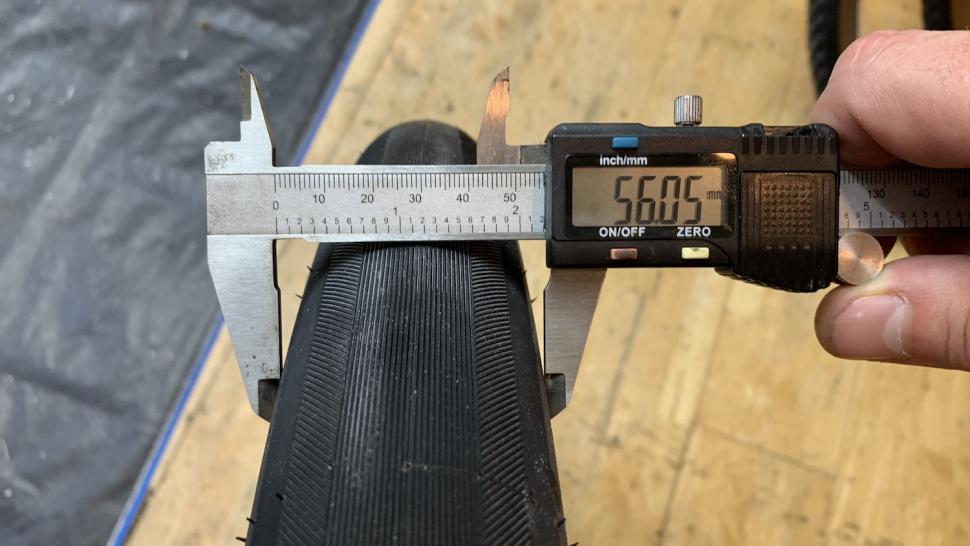


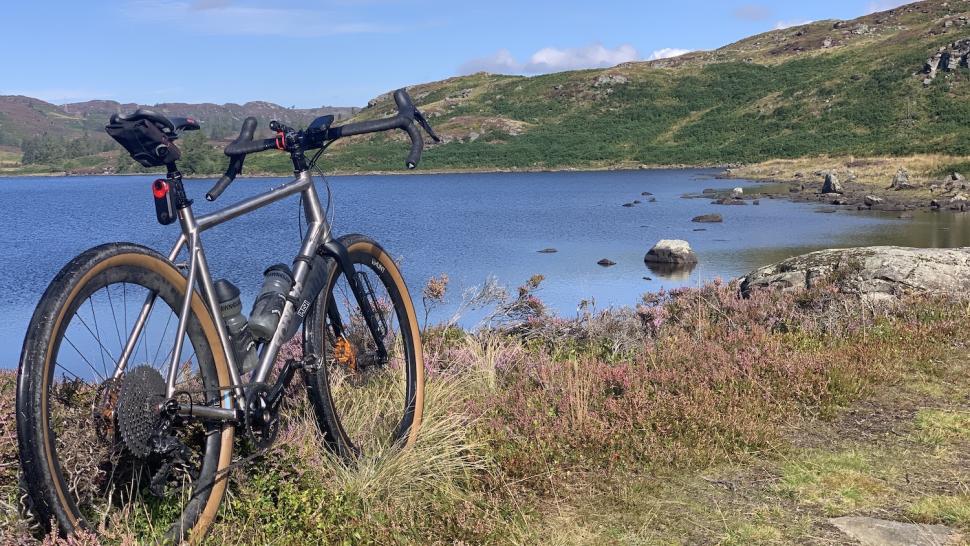

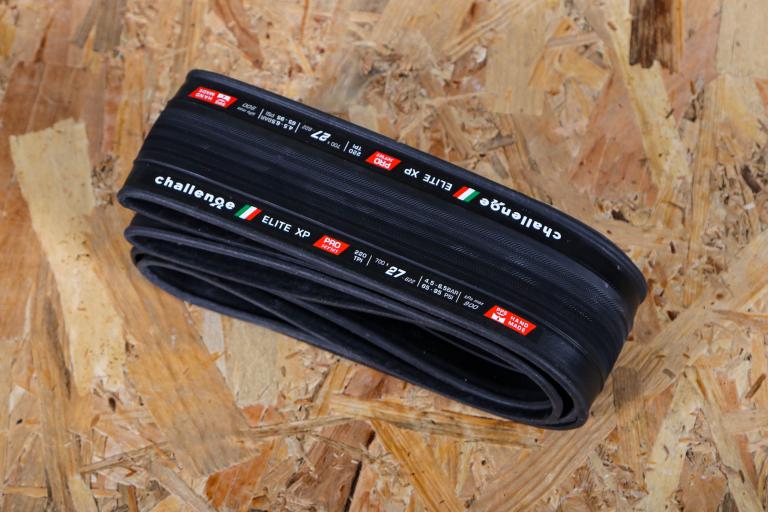
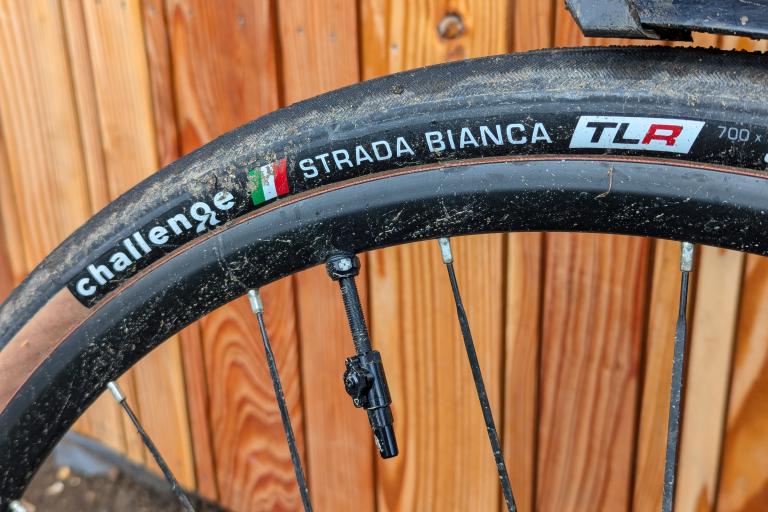
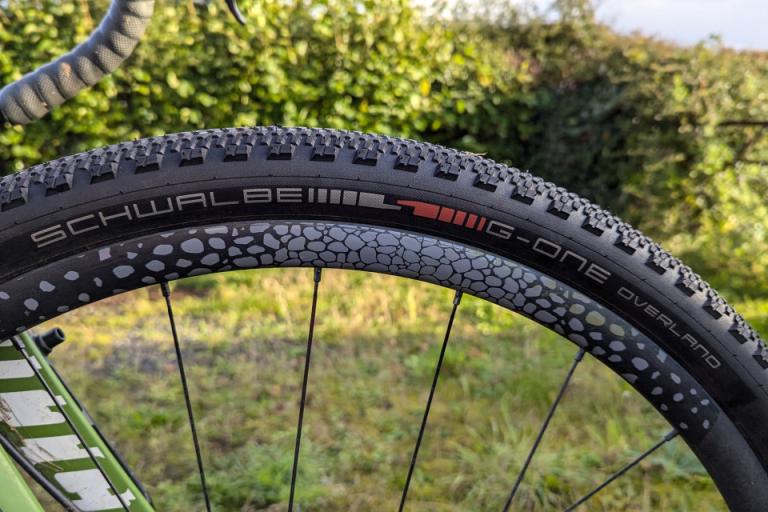
Add new comment
13 comments
One day I will have a set of Rene Herse.
Word of warning although they may have fixed this now: 2.5 years ago I had a RH Barlow Pass that was mounted tubeless blow off a DT Swiss hookless carbon rim. The pressure must have been +- 2.6 bar. I was riding at low speed and was ok, didn't even come off the bike but this could have had catastrophic consequences in different circumstances.
I also had one blow off a (again, DT Swiss) hooked alloy rim, 15 minutes after mounting it tubeless and while I kept it inflated to 3.8 bar. That was way higher than the 'normal' pressure that I would ride it at but still below RH's max 4.1 bar pressure and the rim's 5 bar rating. Pressure was measured with a digital gauge, btw. No injuries but a mighty bang and sealant dripping from the ceiling.
The review says "A dry run without sealant first saw them pop on and held air first go, only needing fingers to be convinced over the rim wall." and that's very true. But consider that less force to get them over the rim also means less force to get them over from the other side.
RH waffle a bit on their site about compatibility with hookless rims: "In other words: top-quality hookless carbon rims are fine, but aluminum rims need hooks. The correct diameter is important for both, of course – it’s just that the hooks of an aluminum rim give you an extra layer of safety to make up for the larger manufacturing tolerances.' see here: https://www.renehersecycles.com/enve-and-zipp-hookless-rims-and-rene-herse-tires/
I've said goodbye to RH. They're very plush tires but the confidence was gone. My advice: be very, very careful them on carbon hookless rims and never, ever ride them tubeless on alloy hookless rims. It would have been nice had the reviewer done some research and not just heaped on the praise, it's a known issue with the brand. The pricing is what it is, imo you can get equal performance at a much lower price point.
There's a broad consensus that hookless rims are risky as hell for tubeless. Many people report tubeless blowoffs using hookless rims.
Many rim brands only guarantee a certain number of tyre brands are 'compatible' with their rims - likely ones they have mounted and overpressured without issue. Things are still a huge mess regarding rim-tyre compatability, and 2.5years ago they were worse.
The Barlow Pass is a 38mm tyre. I don't know what you weigh, but as per my review I ran them about 35PSI. You had them at 2.6 bar/38psi (assuming gauge was accurate). To have *any* tyre blow off at 38-ish PSI is a huge concern - which I and many others will lay not at the tyre's feet, but hookless rim setup.
RH's advice in tubeless setup is to inflate to 60psi and leave overnight. If the tyre stayed on that that massive overpressure compared to 38psi, it should have been fine. Again, I blame hookless rims. I base that on my own experience running several sets of Barlow Pass tyres on different rims (including non-'tubeless ready' ones, as that 'standard' is worthless) until they died, with no issues whatsoever. Likewise many of my customers, many of whom are close friends as well, and I'd be horrified to think they might crash due to an inferior or incorrectly set up tyre system. I'd have to look their partners/children in the face and explain why.
Re your second blowoff - was that a new tyre or reused from another rim? The fact it did blow off at close to the 60psi max talks more to your rim BSD being undersized / rim wall being too short than a fault with a new tyre.
You can find proof of *any* tyre brand blowing off pretty much *any* rim. I've had a used RH tyre blow off a rim during setup overpressure, that's what that test is for. If it stays on overnight and you then halve to get the operating pressure, in my experience that guarantees a safe fit.
There's lies, damn lies and then there's tubeless compatability and anecdata - in which I include my own 'never had an in-ride failure yet'.
Don't forget why tubeless is here - to make riding safer by increasing grip and reducing the chance of a puncture at high speed. I still have the scars from a crash caused by a front tubed tyre flatting during a high-speed twisty descent, where all the air fell out within a few seconds. I've managed the risk of a tubeless blowoff for myself and customers for a decade now, during which time I would have had dozens if not hundreds of standard tubed flats.
Back in the good old days when all rims were hookless it was considered essential when mounting a tyre to make sure it was seated correctly on the beads at a low pressure before increasing the pressure to ride on it. This was done by checking that the line near the bead was an even distance from the rim all the way round, if you found a low spot then there would be a high spot somewhere else that would have to be pushed down to even it out, you couldn't just pump the tyre up and wait for it to pop on like a hooked rim. I wonder if this is part of the cause for the blow-offs as tyre beads are very resistant to stretching, we used to run hookless rims at silly high pressure without problems.
Second tire (static blow off) was brand new. First installation, set up just peachy with satisfying 'pings' and an even rim line. Everything was fine. I bounced/rotated it a couple of times , no issue, no discernable pressure loss (visually, I didn't measure). Until, that is, it blew off the rim 15 minutes later. I immediately binned it. The pressure gauge I use at home is a Topeak Smartgauge D2 digital one and (fwiw) I compared its readings a couple of times to a lab-grade manometer at work and they're virtually identical.
That little episode taught me three things (apart from cooling me off RH tires): never let them 'set' inside and always wear hearing protection and protective glasses when setting up tubeless systems. And buy flowers for the missus. Just in case it does blow off inside and you need to explain pinkish drops of latex falling from the white ceiling.
I didn't say but the first tire had gone through the same 'overpressure, bounce, swirl and let sit for 12 hours' routine without issue, I run through that with every tubeless tire setup. I weigh 71 kilo (150 lbs??).
The rims were DT Swiss. I still use them tubeless and (the alloy one) with tubes at the moment. I mean, I take your point about standards but it's not exactly a knockoff Chinese rim produced in a fly by night factory. Never had a similar event with other tubeless tires. I mean, if those are not reliable, what about Hunt etc?
The Barlow pass tires were great. I ran the extralight casing. Plushest set I ever rode, nothing came close. But after what happened I decided the brand is a bit too rich for my blood.
Did you check to see if the bead wire had failed? we saw that once with a new lad in the club, he was running his tyres at abour 30psi, when we said he should pump them up a bit more he said the tyre came off the rim if he did, we checked and he was right, the bead wire had come apart, probably at the join and the tyre just stretched off the rim at pressure. Can't see anything you did wrong and if other tyres are ok on the same rims it definitely points to a tyre failure, either in design or manufacture.
They're foldable, so it's a Kevlar-or-similar. The chances of that failing are next to nil, so it's all down to fit.
From much experience, I now make sure the mounted but uninflated tyre is tight enough on the rim that it's impossible to slip left or right. Then (and only then) do I dry-inflate and leave for a while at 60PSI.
If it's happy then add sealant, ride a few km, and leave overnight at max pressure.
Following those principles have never had a bad outcome.
Cool. My only thought is that the fit was loose enough that enough slack was able to gather at the point where it blew off. Any tyre needs to be so tight as to be impossible to move when mounted but deflated. I've had wheelsets where on needed one layer of tape to be tight enough, the matching wheel in the pair needed three layers. So I'm guessing at least a few mm difference from the same mfr, same wheelset.
No, there is not.
Hookless rims are absolutely fine, but just like every other product, the manufacturers' (tyre & rim) maximum tolerances need to be followed.
Talking amongst mechanics communites and the likes of Escape Collective, including right up to the esteemed gurus like James Huang and Dave Rome, yes, there is a lot of concern and more risk of a random tyre+hookless rim combo ending badly. RH tested extensively with Zipp and ENVE a few years, back, and they are confident that their tyres on those rims are OK.
BUT
"What about running Rene Herse tires on other hookless rims? It really depends on the quality of the rim. If the diameter is just right, there shouldn’t be any problem"
Removing the hook simplifies the manufacturing process. It makes the brand more money. That's it. There's no benefit to the rider. None. If anything, the closer tolerances required will make fitting / removing trailside to install a tube harder.
As RH state, if the rims are manufactured to tight enough tolerances - +/- 0.2mm - hookless is fine. But if the rim is made to the usual +/-2mm, it does increase the chances of a system failure because there's no safety margin in the hook holding the bead in place.
Zipp say 'Provided they are equipped with tubeless beads, wider gravel tires run at lower pressures are usually fine to use on hookless rims'.
They would say that, wouldn't they - but being a US company no doubt lawyers were involved in that statement. There's a few ambiguities there - 'wider', lower', 'usually' - as well as the inevitable 'In case of a doubt, please consult the tire manufacturer'
I stand by my point that there is a broad consensus - based on the varied technical communities I'm active in - that there is an increased risk of problems with hookless. That manufacturers are so specific in their wording, down to providing go-no-go charts - backs up this concern. If there was no issue, why would they be so detailed?
Some people using some combos have no issues at all. I get that - just as I can say I've never had an issue with an RH tyre, but others have. Anecdata and all that
I'll happily reword my statement to read 'There's a broad consensus - including tyre and wheel manufacturers - that hookless rims increase the risk of issues with tubeless tyres, so you need to be more careful choosing, setting up and operating your wheel system'.
" it's a known issue with the brand."
Is it though...
FWIW I've been running RH BJP (endurance case) on my gravel bike and the rear tyre is due replacing after roughly 2.5k - 3k miles (I don't know exactly how many miles - not everything is on Strava, and I've got another wheelset with chunkier tyres but I don't keep track of which wheels I was using for a given ride). Front tyres has a bit of life left.
However, I do think it would behove road.cc to mix up reviewers for products from a given brand. Except for the Juniper Ridge (reviewed by Stu), every RH/Compass tyre I can find has been tested by Mike (and reaching a similar conclusion in each case). I'm not saying other reviewers would reach different conclusions, but would give a bit of more confidence if the same conclusions were reached by different reviewers with different riding styles, on different terrains, with different preferences and priorities etc. (This is especially pertinent for RH/Compass tyres, where the various different "models" are effectively the same two tyres in a range of sizes, and therefore conclusions from one are likely to be broadly similar to other sizes).
Nice review and I liked Mikes writing style. Thank you.